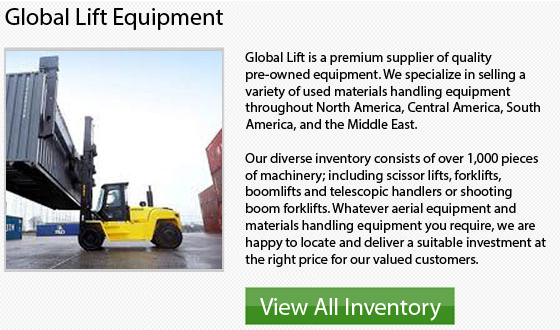
Telescoping Boom Lifts
Telescopic booms are big industrial equipment designed with a straight boom arm that is extendable. The boom is usually located on a rotating turntable. The telescoping boom lifts are normally utilized for jobs that need tasks to be performed at heights which exceed other types of lifts. For example, workers can carry out exterior repairs or renovations on medium sized buildings but utilizing these lifts as opposed to having the extra work of setting up a pulley system or an outside elevator.
The boom lift is only designed to hold a single person. These buckets are more suited to specific tasks like electrical repair, as opposed to window washing or general maintenance. These lifts are available with both indoor and outdoor tires and come in gas or electric configurations.
Scissor Lifts
Under the scissor lifts work platform are the cross braces in which the machine gets its name. Once the braces move together it pushes the platform straight up. Because these types of machines must be directly positioned below the work location, as opposed to boom lifts, these units are way more limited in their use.
Scissor lifts do, however, provide bigger platforms that allow the operator controlling the lift to access a larger work surface once the lift is raised. With scissor lifts, all-terrain capability is less of an issue with these models, since they have to sit on flat ground in order to be utilized. Scissor lifts are ideal for being used for window installation or cladding, since they provide the personnel with the desired mobility; they are also a great choice for exterior repairs or window cleaning applications.
Boom Trucks vs. Cranes
Boom trucks, bucket trucks and cherry pickers each refer to the class a type of utility vehicle utilized particularly for vertical work. Typically, these trucks have a cab. It is here where the driver sits and controls the machine. There is a bucket for where the worker could stand along with an actuator arm for raising the boom and a winch for carrying.
Boom trucks take workers to heights which would normally be inaccessible. The function of cranes is to raise heavy materials or equipment from one place to another. There are a variety of different crane types that could carry out various purposes. Both of these different types of equipment excel at different tasks and are suitable for certain applications and finishing certain jobs.